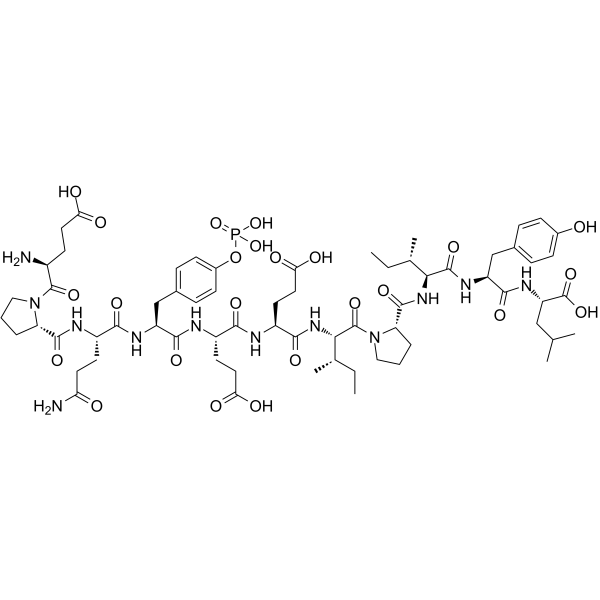EPQpYEEIPIYL |
| Catalog No.GC63390 |
EPQpYEEIPIYL, un phosphopeptide, est un ligand du domaine d'homologie Src 2 (SH2). EPQpYEEIPIYL active les membres de la famille Src (par exemple Lck, Hck, Fyn) en se liant aux domaines SH2.
Products are for research use only. Not for human use. We do not sell to patients.

Cas No.: 147612-86-0
Sample solution is provided at 25 µL, 10mM.
EPQpYEEIPIYL, a phosphopeptide, is a Src homology 2 (SH2) domain ligand. EPQpYEEIPIYL activates Src family members (e.g. Lck, Hck, Fyn) by binding to SH2 domains[1][2].
The hmT-derived phosphopeptide, pY324, which has the sequence EPQpYEEIPIYL, shows the highest affinity binding to GST fusion proteins of the Lck SH2 domain (5-fold higher than Lck’s affinity-for the Lck tail phosphopeptide) and the Src SH2 domain (44-fold higher than Src’s affinity for the Src tail phosphopeptide)[1].
[1]. G Payne, et al. The phosphopeptide-binding specificity of Src family SH2 domains. Chem Biol. 1994 Oct;1(2):99-105.
[2]. T D Mulhern, et al. The SH2 domain from the tyrosine kinase Fyn in complex with a phosphotyrosyl peptide reveals insights into domain stability and binding specificity. Structure. 1997 Oct 15;5(10):1313-23.
Average Rating: 5 (Based on Reviews and 37 reference(s) in Google Scholar.)
GLPBIO products are for RESEARCH USE ONLY. Please make sure your review or question is research based.
Required fields are marked with *




















